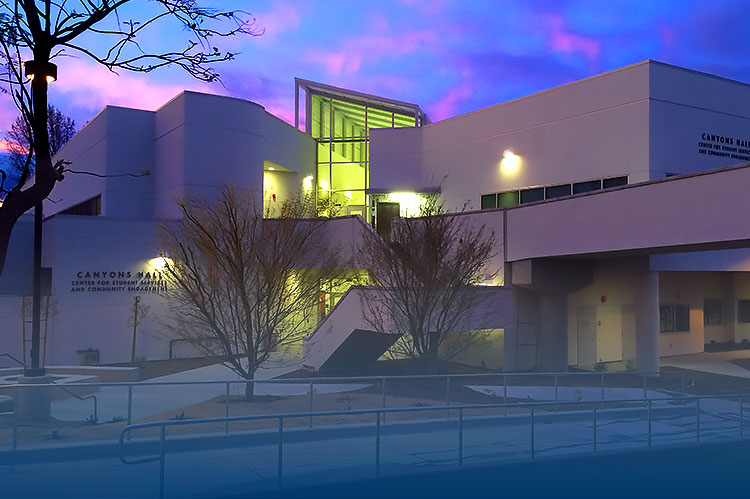Planning Page
ACCESS - 2023 Strategic Plan Objectives
Support student access with an equity-minded lens so that every student is able to enter an informed path.
1. Increase adult student population (age 25+) headcount from baseline of 3,770 in Fall 2021 to 4,170 in Fall 2024, 11% increase, [excludes ISA students] with a goal to restore to pre-pandemic level of 4,258 by Fall 2025.
2. Increase dual-enrolled FTES from 867 in 2020/21 to 1,000 in 2024/25, 15% increase.
3. Increase incarcerated FTES from 130 in 2021/22 to 150 FTES in 2024/25, 15% increase.
4. Increase noncredit CDCP FTES from 144 in 2021/22 to 200 in 2024/25, 39% increase.
5. Restore pre-pandemic levels of enrollments (22,114) by 2024/25, with 21,108 enrollments in 2021/22 as baseline.
6. Increase successful enrollment rate for first-time applicants among first-time cohort of students from 43% in 2020/21 to 45% for 2023/24 cohort (goal assesses in 2024/25). [Aligned w/ SEA Plan]
7. Increase a) high school transition by high school, b) education plan completion, c) Canyon Country Campus FTES, and d) noncredit to credit transition, per Instruction, Student Services, and Enrollment Management plans.
8. Restore the pre-pandemic level of 225 FTES for international student enrollment in 2024/25, and using 225 FTES as a baseline increase 10% FTES in international student enrollment for every academic year afterwards.
ACCESS - 2019-20 New Program Review Objectives
ACCESS - 2019-20 Program Review Accomplishments
ACCESS 2020-21 New and Additional Objectives
ACCESS 2020-21 New and Additional Accomplishments
ENGAGEMENT - 2023 Strategic Plan Objectives
Cultivate an equitable, inclusive, and welcoming environment that supports teaching and learning, fosters engagement, promotes belonging, values diversity, and sustains well-being at the College's campuses.
1. Meaningfully move the needle on diverse hiring as defined by the EEO Plan, district diversity plan, and multiple measures report.
2. Using 22/23 as baseline, measure and assess student and staff participation in civic, social, global, and cultural engagement, along with trainings and events, according to the District's plans on Civic and Community Engagement, civic equity, and Inclusion, Diversity, Equity, Anti-Racism, and Accessibility (IDEAA).
3. Using 22/23 as baseline, measure and assess student and staff involvement in campus life as part of overall support for a welcoming college environment, collaboration, and well-being.
4. Using 22/23 as a baseline, enhance well-being and college engagement of BaNC-served students, including housing insecurity, by increasing service utilization and tracking outcomes and satisfaction.
5. Using 22/23 as a baseline, enhance well-being and college engagement of Health/Wellness-served students by increasing service utilization and satisfaction of services offered, including through trainings, advocacy, community partnerships.
6. In keeping with the best practices of student success literature (such as Student Support (Re)Defined), increase the interconnectedness between services and students to support engagement and success using a variety of use and satisfaction metrics.
7. Using 22/23 as a baseline, increase students served by project-based learning and related participation activities in support of the College's Integrative Learning efforts.
8. Using 22/23 as a baseline, increase internship and employment opportunities for students.
ENGAGEMENT - 2019-20 New Program Review Objectives
ENGAGEMENT - 2019-20 Program Review Accomplishments
ENGAGEMENT 2020-21 New and Additional Objectives
ENGAGEMENT 2020-21 New and Additional Accomplishments
SUCCESS - 2023 Strategic Plan Objectives
Promote equitable student success, the attainment of students' goals, and intentionally maximize opportunities for all students.
1. Increase the number of students earning regular associate degrees (non-Associate Degrees for Transfer (ADT) degrees) from 1,500 in 2021/22 to 1,650 in 2024/25, 10% increase. *
2. Increase number of students earning Associate Degrees for Transfer (ADT) awards from 1,290 in 2021/22 to 1,419 in 2024/25, 10% increase. *
3. Increase the number of students earning certificates from 1,770 in 2021/22 to 1,947 in 2024/25, 10% increase. *
4. Increase number of students earning noncredit certificates awarded from 550 in 2021/22 to 605 in 2024-25, 10% increase. *
5. Hold the percent of exiting CTE students employed in field at the three-year average of 69%.
6. Increase number of all students completing nine credit CTE units from 2,641 (2020/21) to 3030-3162, 15-20% increase.
7. Increase transfer rate within 3 years for first-time cohort of students from 32% (2019/20) to 37%, 5 percentage point increase. **
8. Increase completion of transfer-Level Math and English in year 1 for first-time cohort students from 32% (2020/21) to 36% for 2023/24 FT cohort, 4 percentage point increase. **
9. Increase term-to-term persistence (metric change to account for spring starters) for first-time cohort students from 72% (2019/20) to 73% for 2022/23 cohort, 1 percentage point increase. **
10. Decrease the average number of units for degree completers from 81.8 in 2020/21 to 80.8 by 2024/25, reduction of 1 unit.
11. Eliminate equity gaps for prioritized disproportionately impacted groups per metrics included in the Student Equity & Achievement Plan (2022-2025). **
12. For populations who earned high school equivalency, noncredit certificate, California Community Colleges Chancellor's Office (CCCCO) approved credit certificate, associate degree, CCCCO-approved bachelor's degree, eliminate equity gaps for three prioritized DI groups while increasing overall success (degree/ certificate completion) rate from 18% for 2017/18 cohort to 20% for 2020/21 cohort.**
a. Black/African American: Increase current rate from 11% (2017/18 Cohort) to 19% (20/21 cohort).
b. Hispanic/Latinx: Increase current success rate from 15% (2017/18 Cohort) to 21% (20/21 cohort).
c. First-Generation: Increase current success rate from 10% (2017/18 Cohort) to 22% (20/21 cohort).
13. For populations who have successful enrollment, eliminate equity gaps for one prioritized DI group while increasing overall success rate to 45% for 2023/24 cohort.**
a. Black/African Americans: increase their current success rate from 37% (20/21) to 45% (23/34 cohort).
b. Hispanic/Latinx: Increase current success rate from 30% (19/20 Cohort) to 35% (23/24 cohort).
14. For populations who transfer to a four-year institution, eliminate equity gaps for two prioritized DI groups while increasing overall success rate to 37% for 2019/20 cohort.**
a. Hispanic/Latinx: increase current success rate from 27% (16/17 Cohort) to 37% (19/20 cohort).
b. First-Generation: increase current success rate from 24% (16/17 Cohort) to 37% (19/20 cohort).
15. For all populations who persist fall to spring, eliminate equity gaps for three prioritized DI groups while increasing overall success rate to 73% for 2022/23 cohort.**
a. Black/African American: Increase current success rate from 59% (19/20 Cohort) to 73% (22/23 cohort).
b. First-Generation: Increase current success rate from 66% (19/20 Cohort) to 69% (22/23 cohort).
c. Males: Increase current success rate from 69% (19/20 Cohort) to 71% (22/23 cohort).
16. For populations who have successful enrollment, eliminate equity gaps for one prioritized DI group while increasing overall success rate to 45% for 2023/24 cohort.**
a. Black/African Americans: increase their current success rate from 37% (20/21) to 45% (23/34 cohort).
*[Aligned w/ Program Review]
**[Aligned w/ SEA Plan]
SUCCESS - 2019-20 New Program Review Objectives
SUCCESS - 2019-20 Program Review Accomplishments
SUCCESS 2020-21 New and Additional Objectives
SUCCESS 2020-21 New and Additional Accomplishments
PROGRAM REVIEW PROCESS
The District has a long tradition of strategic vision and planning, beginning with the formation in 1989 of its Comprehensive Planning Task Force, later renamed the College Planning Team. Planning is driven by the College's statements of mission, values, and philosophy.
Administrators, faculty and staff engage in a systematic process that contains annual and three-year cycles. They reflect on research and external information, such as outcomes information, self-studies, research reports, program review data, enrollment patterns, and workforce trends. They take into consideration the implications of state policies and funding opportunities.
They assess changes in the community that impact the College's programs and services. They identify opportunities for partnerships and for potential resource development. Departments play a central role and drive college wide-planning, budget development, program development, and other services. At the same time, departmental plans are influenced by College-wide plans, reflecting institutional priorities. Every academic department and administrative program completes a full program review every three years with annual updates.
Educational and Facilities Master Plan
OPERATIONAL PLANS
Technology Master
2022-2027 Technology Master Plan
Student Equity & Achievement
Student Equity and Achievement Plan
Guided Pathways
CCCO Scale of Adoption Assessment
Local Goal Setting
Annual Budget Plan
Public Information
Capital Outlay Plan
Decision Making Guide
Equal Employment Opportunity
Equal Employment Opportunity Plan
Professional Development Plan
2020-2021 Prof Development Plan
Enrollment Management
2023-25 Strategic Enrollment Management Plan
Strong Workforce
Strong Workforce
Staffing
Staffing

 My Canyons
My Canyons  Canvas
Canvas 
